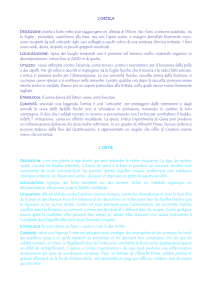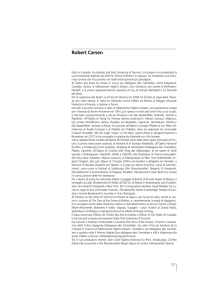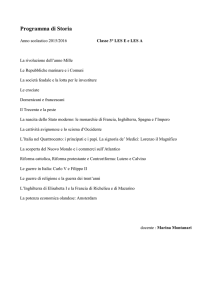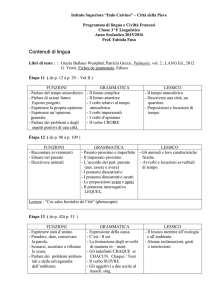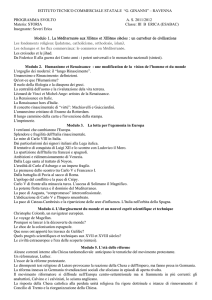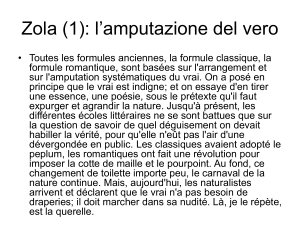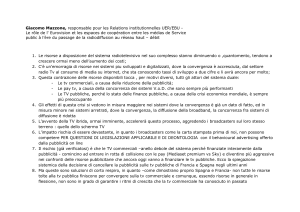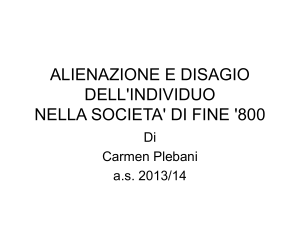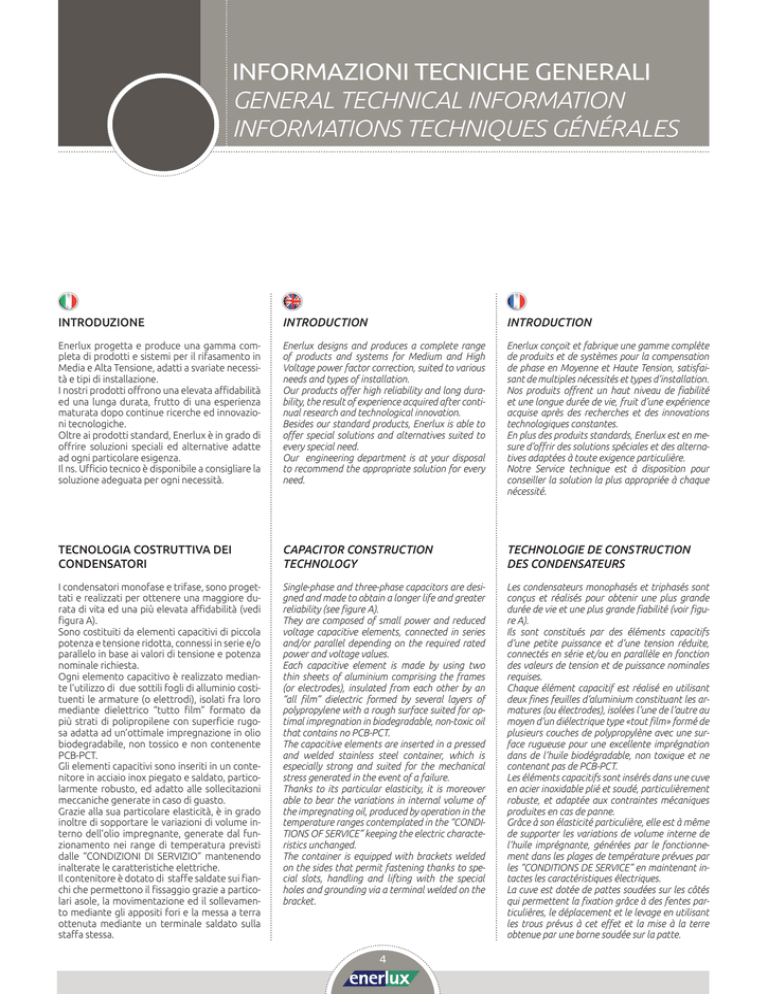
INFORMAZIONI TECNICHE GENERALI
GENERAL TECHNICAL INFORMATION
INFORMATIONS TECHNIQUES GÉNÉRALES
INTRODUZIONE
INTRODUCTION
INTRODUCTION
Enerlux progetta e produce una gamma completa di prodotti e sistemi per il rifasamento in
Media e Alta Tensione, adatti a svariate necessità e tipi di installazione.
I nostri prodotti offrono una elevata affidabilità
ed una lunga durata, frutto di una esperienza
maturata dopo continue ricerche ed innovazioni tecnologiche.
Oltre ai prodotti standard, Enerlux è in grado di
offrire soluzioni speciali ed alternative adatte
ad ogni particolare esigenza.
Il ns. Ufficio tecnico è disponibile a consigliare la
soluzione adeguata per ogni necessità.
Enerlux designs and produces a complete range
of products and systems for Medium and High
Voltage power factor correction, suited to various
needs and types of installation.
Our products offer high reliability and long durability, the result of experience acquired after continual research and technological innovation.
Besides our standard products, Enerlux is able to
offer special solutions and alternatives suited to
every special need.
Our engineering department is at your disposal
to recommend the appropriate solution for every
need.
Enerlux conçoit et fabrique une gamme complète
de produits et de systèmes pour la compensation
de phase en Moyenne et Haute Tension, satisfaisant de multiples nécessités et types d’installation.
Nos produits offrent un haut niveau de fiabilité
et une longue durée de vie, fruit d’une expérience
acquise après des recherches et des innovations
technologiques constantes.
En plus des produits standards, Enerlux est en mesure d’offrir des solutions spéciales et des alternatives adaptées à toute exigence particulière.
Notre Service technique est à disposition pour
conseiller la solution la plus appropriée à chaque
nécessité.
TECNOLOGIA COSTRUTTIVA DEI
CONDENSATORI
CAPACITOR CONSTRUCTION
TECHNOLOGY
TECHNOLOGIE DE CONSTRUCTION
DES CONDENSATEURS
I condensatori monofase e trifase, sono progettati e realizzati per ottenere una maggiore durata di vita ed una più elevata affidabilità (vedi
figura A).
Sono costituiti da elementi capacitivi di piccola
potenza e tensione ridotta, connessi in serie e/o
parallelo in base ai valori di tensione e potenza
nominale richiesta.
Ogni elemento capacitivo è realizzato mediante l’utilizzo di due sottili fogli di alluminio costituenti le armature (o elettrodi), isolati fra loro
mediante dielettrico “tutto film” formato da
più strati di polipropilene con superficie rugosa adatta ad un’ottimale impregnazione in olio
biodegradabile, non tossico e non contenente
PCB-PCT.
Gli elementi capacitivi sono inseriti in un contenitore in acciaio inox piegato e saldato, particolarmente robusto, ed adatto alle sollecitazioni
meccaniche generate in caso di guasto.
Grazie alla sua particolare elasticità, è in grado
inoltre di sopportare le variazioni di volume interno dell’olio impregnante, generate dal funzionamento nei range di temperatura previsti
dalle “CONDIZIONI DI SERVIZIO” mantenendo
inalterate le caratteristiche elettriche.
Il contenitore è dotato di staffe saldate sui fianchi che permettono il fissaggio grazie a particolari asole, la movimentazione ed il sollevamento mediante gli appositi fori e la messa a terra
ottenuta mediante un terminale saldato sulla
staffa stessa.
Single-phase and three-phase capacitors are designed and made to obtain a longer life and greater
reliability (see figure A).
They are composed of small power and reduced
voltage capacitive elements, connected in series
and/or parallel depending on the required rated
power and voltage values.
Each capacitive element is made by using two
thin sheets of aluminium comprising the frames
(or electrodes), insulated from each other by an
“all film” dielectric formed by several layers of
polypropylene with a rough surface suited for optimal impregnation in biodegradable, non-toxic oil
that contains no PCB-PCT.
The capacitive elements are inserted in a pressed
and welded stainless steel container, which is
especially strong and suited for the mechanical
stress generated in the event of a failure.
Thanks to its particular elasticity, it is moreover
able to bear the variations in internal volume of
the impregnating oil, produced by operation in the
temperature ranges contemplated in the “CONDITIONS OF SERVICE” keeping the electric characteristics unchanged.
The container is equipped with brackets welded
on the sides that permit fastening thanks to special slots, handling and lifting with the special
holes and grounding via a terminal welded on the
bracket.
Les condensateurs monophasés et triphasés sont
conçus et réalisés pour obtenir une plus grande
durée de vie et une plus grande fiabilité (voir figure A).
Ils sont constitués par des éléments capacitifs
d’une petite puissance et d’une tension réduite,
connectés en série et/ou en parallèle en fonction
des valeurs de tension et de puissance nominales
requises.
Chaque élément capacitif est réalisé en utilisant
deux fines feuilles d’aluminium constituant les armatures (ou électrodes), isolées l’une de l’autre au
moyen d’un diélectrique type «tout film» formé de
plusieurs couches de polypropylène avec une surface rugueuse pour une excellente imprégnation
dans de l’huile biodégradable, non toxique et ne
contenant pas de PCB-PCT.
Les éléments capacitifs sont insérés dans une cuve
en acier inoxidable plié et soudé, particulièrement
robuste, et adaptée aux contraintes mécaniques
produites en cas de panne.
Grâce à son élasticité particulière, elle est à même
de supporter les variations de volume interne de
l’huile imprégnante, générées par le fonctionnement dans les plages de température prévues par
les “CONDITIONS DE SERVICE” en maintenant intactes les caractéristiques électriques.
La cuve est dotée de pattes soudées sur les côtés
qui permettent la fixation grâce à des fentes particulières, le déplacement et le levage en utilisant
les trous prévus à cet effet et la mise à la terre
obtenue par une borne soudée sur la patte.
4
INFORMAZIONI TECNICHE GENERALI - GENERAL TECHNICAL INFORMATION - INFORMATIONS TECHNIQUES GÉNÉRALES
A richiesta è possibile realizzarlo in lamiera di
acciaio inox nei casi in cui vi sia la necessità di installare il condensatore in ambiente aggressivo.
Particolare attenzione è posta sul trattamento di verniciatura del contenitore resistente
all’aggressione atmosferica di agenti inquinanti
di tipo industriale e/o marino (colore standard
RAL 7030).
I terminali dei condensatori sono realizzati
mediante robusti isolatori ceramici passanti,
adatti sia all’installazione interna che esterna
in quanto speciali trattamenti della ceramica
conferiscono un’altissima resistenza agli agenti
atmosferici.
I condensatori presentano normalmente tutti
i terminali isolati dal contenitore, ma possono
essere realizzati anche condensatori monofase
con un polo collegato al contenitore, utilizzati
ad esempio per la realizzazione di banchi isolati
da terra.
I condensatori sono muniti internamente di dispositivo di scarica interna che riduce la tensione ai terminali ad un valore ≤ 75V, partendo da
un picco iniziale di tensione pari a Un*√2 in un
tempo massimo di 10 minuti, in conformità alle
normative di riferimento IEC (o 50 V in 5 min se
realizzati in conformità alle norme IEEE).
I condensatori possono essere muniti di fusibili
interni posto in serie all’elemento (vedi “PROTEZIONI ED ACCESSORI”).
On request, it is possible to make it in stainless
steel plate when it is necessary to install the capacitor in an aggressive environment.
Special attention is paid to the treatment of painting the container that is resistant to atmospheric
aggression by polluting agents of an industrial
and/or marine nature (standard colour RAL 7030).
Sur demande il est possible de la réaliser en tôle
d’acier inox, s’il est nécessaire d’installer le condensateur dans des ambiences agressives.
Une attention particulière est réservée au traitement de peinture de la cuve, résistant à l’agression
atmosphérique d’agents polluants de type industriel et/ou marin (couleur standard RAL 7030).
The terminals of the capacitors are made with
sturdy ceramic bushings, suited for both indoor
and outdoor installation as special treatments of
the ceramics provide extremely high weatherability.
The capacitors normally have all the terminals insulated from the container, but single-phase capacitors can also be made with a pole connected to
the container, used for instance to make ground
insulated banks.
The capacitors are internally equipped with an internal discharge device that reduces the voltage
at the terminals to ≤ 75V, starting from an initial
peak in voltage equal to Un*√2 in a maximum
time of 10 minutes, in accordance with the reference standards (or 50 V within 5 minutes if realized in compliance with IEEE standards).
The capacitors can be provided with internal fuses
installed in series with the element (see “PROTECTIONS AND ACCESSORIES”).
Les bornes des condensateurs sont réalisées au
moyen d’isolateurs céramiques robustes, convenant aussi bien à l’installation intérieure qu’à l’installation extérieure, car des traitements spéciaux
de la céramique apportent une très haute résistance aux agents atmosphériques.
Toutes les bornes des condensateurs sont en
général isolées de la cuve, mais il est également
possible de réaliser des condensateurs monophasés avec un pôle relié à la cuve, utilisés par
exemple pour la réalisation de batteries isolées de
terre.
Les condensateurs sont munis à l’intérieur d’un
dispositif de décharge interne qui réduit la tension
aux bornes à une valeur ≤ 75V, partant d’une crête
initiale de tension égale à Un*√2 dans un temps
maximal de 10 minutes, conformément aux réglementations de référence (ou 50 V dans 5 minutes
si produits en accord aux normes IEEE).
Les condensateurs peuvent être munis de fusibles
internes placés en série à l’élément (voir “PROTECTIONS ET ACCESSOIRES”).
Terminali di connessione
Connection terminals
Bornes de connexion
Isolatori ceramici passanti
Ceramic bushings
Isolateurs céramiques
Staffe per fissaggio e movimentazione
Brackets for fixing and handling
Pattes pour fixation et déplacement
Terminale di terra
Ground terminal
Borne de terre
Contenitore in acciaio
Steel container
Cuve en acier
Elementi capacitivi
Capacitative elements
Éléments capacitifs
FIG. A
Vista esterna e vista con sezione interna di un Condensatore
External view and view with internal cross-section of a Capacitor
Vue extérieure et vue avec coupe interne d’un Condensateur
5
INFORMAZIONI TECNICHE GENERALI - GENERAL TECHNICAL INFORMATION - INFORMATIONS TECHNIQUES GÉNÉRALES
CARATTERISTICHE ELETTRICHE DEI CONDENSATORI
ELECTRICAL CHARACTERISTICS OF THE CAPACITORS
CARACTÉRISTIQUES ÉLECTRIQUES DES CONDENSATEURS
1 ÷ 22 kV
Tensione nominale
Rated voltage
Tension nominale
(per Condensatori monofase)
(for single-phase Capacitors)
(pour Condensateurs monophasés)
(per Condensatori trifase)
1 ÷ 17,5 kV
(for three-phase Capacitors)
(pour Condensateurs triphasés)
Potenza nominale
Rated power
Puissance nominale
1 ÷ 950 kvar
Livello di isolamento standardizzato
Standard insulation level
Niveau d’isolement normalisé
vedi tabella n.1
see table no.1
voir tableau n° 1
per unità singole e per batterie con potenza
nominale totale fino a 3 Mvar
- 5 % ÷ + 10 %
for single units and banks with total
rated power up to 3 Mvar
pour unités individuelles et pour batteries avec
puissance nominale totale jusqu’à 3 Mvar
per batterie con potenza nominale
tra 3 e 30 Mvar
0 % ÷ + 10 %
for banks with rated power
between 3 and 30 Mvar
pour batteries avec puissance nominale
entre 3 et 30 Mvar
per batterie con potenza nominale
totale maggiore di 30 Mvar
0%÷+5%
for banks with total rated power
greater than 30 Mvar
pour batteries avec puissance nominale
totale supérieure à 30 Mvar
Tolleranza sulla Capacità
Capacitance Tolerance
Tolérance sur la Capacité
Frequenza nominale
Rated frequency
Fréquence nominale
50 Hz / 60 Hz
≤ 0.13 W/kvar
Perdite
losses
Pertes
Liquido isolante
Insulating liquid
Liquide isolant
Dispositivo di scarica
Discharge device
Dispositif de décharge
Norme di riferimento
Reference standards
Normes de référence
dopo 500 ore di funzionamento a
tensione e frequenza nominale
≤ 0.1 W/kvar
after 500 hours of operation at rated
frequency and voltage
après 500 heures de fonctionnement à la
tension et à la fréquence nominales
olio biodegradabile
(privo di PCB-PCT)
biodegradable oil
(with no PCB-PCT)
huile biodégradable
(sans PCB-PCT)
interno tensione residua 75 V in 10
minuti in accordo alle norme IEC o
a richiesta tensione residua 50 V in
minuti in accordo a norme IEEE
built-in, residual voltage of 75 V within 10
minutes in compliance with IEC standards or on
request residual voltage of 50 V within 5 minutes
in compliance with IEEE standards.
Intérieure, tension résiduelle de 75 V dans
10 minutes en accord aux normes IEC ou sur
demande, tension résiduelle de 50 V dans 5
minutes en accord aux normes IEEE
CEI EN 60871/1 - CEI EN 60871/4 (per Italia / for Italy / pour l’Italie)
IEC 60871/1 - IEC 60871/2 - IEC 60871/4 (internazionali / international / internationales)
BS-VDE- (ed altre norme importanti / and other important standards / et autres normes importantes)
Altre caratteristiche realizzabili su richiesta. / Other characteristics can be made on request. / Autres caractéristiques réalisables sur demande.
Tensione massima di riferimento
Highest voltage for equipment
Tension la plus élevée pour le matériel
Tensione nominale di tenuta ad impulso atmosferico
Rated lightning impulse withstand voltage
Tension nominale de tenue au choc de foudre
Tensione nominale di tenuta di breve durata a frequenza industriale
Rated power-frequency short duration withstand voltage
Tension nominale de tenue de courte durée à fréquence industrielle
Um
Valore efficace / r. m. s. / Valeur efficace
Valore di picco / kV / Valeur de crête
Valore efficace / r. m. s. / Valeur efficace
kV
1,2
2,4
3,6
7,2
12
17,5
24
36
kV
25 (1)
35 (1)
40
60
75
95
125
170
(1) Non si applica ai circuiti non esposti / It does not apply to non-exposed circuits / Ne s’applique pas aux circuits non exposés
TAB. 1
Livelli di isolamento normalizzati per Um < 52 kV
Normalized insulation levels for Um < 52 kV
Niveaux d’isolement normalisés pour Um < 52 kV
6
6
8
10
20
28
38
50
70
INFORMAZIONI TECNICHE GENERALI - GENERAL TECHNICAL INFORMATION - INFORMATIONS TECHNIQUES GÉNÉRALES
103
102
101
Variazione della capacità in funzione della Temperatura
Cn/C20°C (%)
100
FIG. B
99
Variation in Capacitance over Dieletric temperature
98
Variation de la Capacité en fonction de la Température
97
0
-20
40
20
80
60
100
96
T (°C)
0,2
0,15
FIG. C
Variazione delle perdite dielettriche in funzione della
Temperatura
W/Kvar
0,1
Change in dielectric losses according to Temperature
Variation des pertes diélectriques en fonction de la
Température
0,05
-20
20
0
60
40
80
0
100
T (°C)
0,2
0,15
FIG. D
Variazione delle perdite dielettriche in funzione dei mesi di
funzionamento
Change in dielectric losses according to months of
operation
0,05
Variation des pertes diélectriques en fonction des mois de
fonctionnement
0
3
6
9
mesi di funzionamento - months of operation - mois de fonctionnement
7
W/Kvar
0,1
INFORMAZIONI TECNICHE GENERALI - GENERAL TECHNICAL INFORMATION - INFORMATIONS TECHNIQUES GÉNÉRALES
CONDIZIONI DI SERVIZIO
CONDITIONS OF SERVICE
CONDITIONS DE SERVICE
Per evitare alterazioni del funzionamento e
prevenire la riduzione della vita dei condensatori, è di fondamentale importanza definire ed
identificare le condizioni in cui potrà operare secondo i principali parametri che caratterizzano il
tipo e le condizioni di funzionamento.
To avoid any alterations to operation and to prevent shortening the life of the capacitors, it is of
fundamental importance to define and identify
the conditions in which it can operate according
to the main parameters that characterize the type
and conditions of operation.
Pour éviter toute altération du fonctionnement et
prévenir la réduction de la durée de vie des condensateurs, il est fondamental de définir et d’identifier les conditions dans lesquelles il pourra opérer
selon les principaux paramètres qui caractérisent
le type et les conditions de fonctionnement.
Tipo di installazione
Type of installation
Type d’installation
Sovraccarichi di tensione ammessi in servizio
Voltage overloads permitted in service
Surcharges de tension admises en service
Esterno / Interno
Outdoor / Indoor
Extérieur / Intérieur
vedi tabella 2
see table 2
voir tableau 2
Sovratensione per transitorio di inserzione
Overvoltage for inrush transient
Surtension pour transitoire d’insertion
≤ 2*√2UN
Potenza max di esercizio ammessa
Max permissible working power
Puissance maxi de service admise
1.35 QN
Max valore di cresta del transitorio di corrente
Max peak value of the current transient
Valeur maxi de crête du transitoire de courant
Max durata del transitorio
Max duration of the transient
Durée maxi du transitoire
Massimo numero di inserzioni
Maximum number of inrushes
Nombre maximal d’insertions
100 IN
0.5
Periodi
Periods
All’anno
A year
Périodes
1000
Par an
Sovraccarico di corrente per effetto combinato di
armoniche e sovratensioni in rete
Current overload due to combined effect of harmonics and overvoltages in the network
I MAX ≤ 1.3 IN
Surcharge de courant par effet combiné d’harmoniques et de surtensions dans le réseau
Classe di temperature
Temperature class
Classe de températures
Massima altitudine
Maximum altitude
Altitude maximale
-25/B (standard)
-25/B (standard)
-25/B (standard)
Vedi tabella 3 per altre categorie
See table 3 for other categories
Voir tableau 3 pour d’autres catégories
1.000 m s.l.m.
1.000 m a.s.l.
1.000 m
au-dessus du niveau de la mer
Altre caratteristiche realizzabili su richiesta. / Other characteristics can be made on request. / Autres caractéristiques réalisables sur demande.
8
INFORMAZIONI TECNICHE GENERALI - GENERAL TECHNICAL INFORMATION - INFORMATIONS TECHNIQUES GÉNÉRALES
Tensione
Voltage
Tension
Durata massima
Maximum duration
Durée maximale
Osservazioni
Remarks
Observations
Un
continua
continuous
continue
Massimo valore medio durante un qualsiasi periodo di energizzazione
Highest average value during any period of capacitor energization
Valeur moyenne la plus élevée pendant n’importe quelle période de mise sous tension
1,1 Un
12 h ogni 24 h
12 h every 24 h
12 h toutes les 24 h
Regolazioni e fluttuazioni della tensione di rete
Network voltage regulations and fluctuations
Réglages et fluctuations de la tension de réseau
1,15 Un
30 min ogni 24 h
30 min every 24 h
30 min toutes les 24 h
Regolazioni e fluttuazioni della tensione di rete
Network voltage regulations and fluctuations
Réglages et fluctuations de la tension de réseau
1,2 Un
5 min
Aumento di tensione a basso carico
Voltage rise at light load
Augmentation de la tension en période de faible charge
1,3 Un
1 min
E’ importante segnalare che sovratensioni maggiori di 1.15 Un non possono verificarsi per non più di 200 volte nella vita di un Condensatore.
It is important to note that overvoltages greater than 1.15 Un may not occur for no more than 200 times in the life of a Capacitor.
A signaler que les surtensions supérieures à 1,15 Un ne peuvent pas se produire plus de 200 fois dans la vie d’un Condensateur.
TAB. 2
Livelli di sovratensione ammissibili in servizio.
Admissible overvoltage levels in service.
Niveaux de surtension admissibles en service.
Temperatura dell’aria ambiente
Ambient air temperature
Température de l’air ambiant
Lettera
Letter
Lettre
Massimo valore medio per ogni periodo di
Highest average value during any period of
Valeur moyenne la plus élevée sur toute période de
Massima
Maximum
Maximale
24 h
1 anno / 1 year / 1 an
A
+40° C
+30° C
+20° C
B
+45° C
+35° C
+25° C
C
+50° C
+40° C
+30° C
D
+55° C
+45° C
+35° C
N.B. Enerlux realizza su richiesta prodotti con categorie di temperatura oltre i limiti riportati nella tabella
N.B. On request, Enerlux makes products with temperature classes outside the limits stated in the table
N.B. Enerlux réalise sur demande des produits avec des catégories de température au-delà des limites figurant dans le tableau
TAB. 3
Valori massimi per le varie classi di temperatura.
Maximum Values for the various temperature classes.
Valeurs maximales pour les différentes classes de température.
9
INFORMAZIONI TECNICHE GENERALI - GENERAL TECHNICAL INFORMATION - INFORMATIONS TECHNIQUES GÉNÉRALES
RÉDUCTION DE LA DURÉE DE VIE D’UN
CONDENSATEUR SUITE À DES SURTENSIONS PERMANENTES
La scelta della tensione nominale di un condensatore deve essere effettuata considerando
che la presenza di sovratensioni permanenti,
provoca una diminuzione della vita del condensatore stesso. Si ricorda, inoltre, che l’utilizzo
di condensatori in impianti ove siano presenti
delle armoniche, che determinano un aumento
della tensione di lavoro del condensatore, ne
causano una rapida riduzione della vita qualora
si verifichino risonanze.
In figura E è rappresentato l’andamento della
riduzione della vita di un condensatore in funzione del coefficiente di sovratensione permanente.
Si deve considerare inoltre che particolari condizioni di servizio provocano un innalzamento
della temperatura di lavoro rispetto a quella di
progetto, determinando una diminuzione della
vita del condensatore, con un andamento simile
a quello riportato in figura F.
The choice of the rated voltage of a capacitor
must be made considering that permanent overvoltages shorten the life of the capacitor. Moreover, remember that using capacitors in installations where there are harmonics brings about an
increase in the working voltage of the capacitor
and cause a rapid shortening of its life if there are
resonances.
Figure E shows the shortening of the life of a capacitor according to the coefficient of permanent
overvoltage.
It is moreover necessary to consider that particular conditions of service cause an increase in the
working temperature over that of the design,
shortening the life of the capacitor, with a development similar to the one shown in figure F.
Le choix de la tension nominale d’un condensateur
doit s’effectuer en considérant que la présence de
surtensions permanentes provoque une diminution de la durée de vie du condensateur.
Il faut par ailleurs rappeler que la présence des
harmoniques dans les installations qui comprennent des condensateurs entraîne une augmentation de la tension de fonctionnement du condensateur, et cause une réduction rapide de la durée
de sa vie si des résonances se produisent.
La Figure E représente l’évolution de la réduction
de la durée de vie d’un condensateur en fonction
du coefficient de surtension permanente.
Il faut par ailleurs considérer que des conditions
particulières de service provoquent une hausse
de la température d’emploi par rapport à celle de
projet, entraînant une diminution de la durée de
vie du condensateur, avec une évolution semblable à celle représentée en Figure F.
% di vita / % of life / % de vie
REDUCTION IN THE LIFE OF A CAPACITOR DUE TO PERMANENT OVERVOLTAGES
% di vita / % of life / % de vie
RIDUZIONE DELLA VITA DI UN CONDENSATORE PER SOVRATENSIONI
PERMANENTI
FIG. E
FIG. F
Andamento della riduzione di vita dei condensatori in funzione delle sovratensioni
permanenti a temperatura costante entro i limiti previsti dalle condizioni di servizio
Andamento della riduzione di vita dei condensatori in funzione della temperatura di
lavoro a tensione e frequenza nominale
Shortening in the life of capacitors in relation to the permanent overvoltages at
constant temperature within the limits contemplated by the conditions of service
Shortening in the life of capacitors in relation to the working temperature at rated
frequency and voltage
Évolution de la réduction de la durée de vie des condensateurs en fonction des
surtensions permanentes à une température constante dans les limites prévues par
les conditions de service
Évolution de la réduction de la durée de vie des condensateurs en fonction de la
température d’emploi à tension et à fréquence nominales
10
INFORMAZIONI TECNICHE GENERALI - GENERAL TECHNICAL INFORMATION - INFORMATIONS TECHNIQUES GÉNÉRALES
GUIDA ALL’ESERCIZIO E SCELTA DELLE
UNITA’
GUIDE TO OPERATION AND
CHOOSING UNITS
INTRODUCTION À L’UTILISATION ET
CHOIX DES UNITÉS
I condensatori di rifasamento, quando energizzati,
funzionano in modo continuativo a pieno carico, o
a carichi che differiscono da questo, solo per effetto di variazioni di tensione e di frequenza.
Poiché i sovraccarichi ed i surriscaldamenti abbreviano la vita del condensatore, le condizioni di
esercizio (temperatura, tensione, corrente, ecc...)
devono essere strettamente controllate e specificate.
Occorre inoltre precisare che l’introduzione di
una capacità concentrata in un sistema, potrebbe
determinare condizioni di funzionamento insoddisfacenti (amplificazione delle armoniche, autoeccitazione di macchine, sovratensioni dovute
a manovre, cattivo funzionamento dei sistemi di
telecomando ad audiofrequenza ecc.).
Le informazioni a seguire riguardano gli aspetti più
importanti che devono essere presi in considerazione, non essendo possibile dare semplici regole
di scelta per il tipo di installazione e di funzionamento valide per ogni specifico caso.
When power factor correction capacitors are
energized, they work continuously at full load, or
at loads that differ from this only because of changes in voltage and frequency.
Since overloads and overheating shorten the life
of the capacitor, the working conditions (temperature, voltage, current, etc...) must be closely checked and specified. In addition, it is necessary to
specify that adding a concentrated capacity to a
system could produce unsatisfactory conditions of
operation (amplification of harmonics, machines
self-energizing, overvoltages due to operations,
incorrect operation of radio frequency remote
control systems, etc.).
The following information concerns the most important aspects that must be taken into consideration as it is not possible to give straightforward
rules that hold for choosing the type of installation and operation for every specific case.
Les condensateurs de compensation de phase, lorsqu’ils sont sous tension, fonctionnent de manière
continue à pleine charge ou à des charges qui diffèrent de cette dernière, seulement par l’effet de
variations de tension et de fréquence.
Étant donné que les surcharges et les surchauffes
réduisent la durée de vie du condensateur, les conditions de service (température, tension, courant, etc.)
doivent être étroitement contrôlées et spécifiées.
Il faut en outre préciser que l’introduction d’une
capacité concentrée dans un système pourrait
entraîner des conditions de fonctionnement insatisfaisantes (amplification des harmoniques, autoexcitation de machines, surtensions dues à des
manœuvres, mauvais fonctionnement des systèmes
de télécommande à audiofréquence, etc.).
Les informations suivantes concernent les aspects
les plus importants qu’il faut prendre en considération, étant impossible de fournir de simples règles
de choix pour le type d’installation et de fonctionnement valables dans tous les cas.
TENSIONE NOMINALE
La tensione nominale del condensatore non deve
essere minore della massima tensione di esercizio
della rete a cui il condensatore deve essere collegato, tenendo conto dell’influenza del condensatore stesso.
Nel caso in cui si necessiti di un sistema con reattanze di blocco o filtro per le armoniche, è da
considerare anche il conseguente aumento della
tensione ai terminali del condensatore rispetto
alla tensione di esercizio della rete.
La tensione nominale del condensatore dovrà
quindi presentare una valore maggiore rispetto
alla tensione di rete.
SOVRATENSIONI
Qualora le unità operino in reti con sovratensioni
maggiori da quelle indicate nella Tabella 2, sarà
opportuno scegliere un condensatore con tensione nominale maggiore per evitare una riduzione di
vita delle stesse.
TENSIONE RESIDUA
La tensione residua è la tensione che permane
tra i terminali di un condensatore dopo un certo
tempo a partire dal momento in cui il componente
viene scollegato dalla rete.
In conformità alle norme internazionali IEC 608711, questa tensione deve scendere al di sotto di 75
V entro 10 minuti dallo scollegamento del condensatore dalla rete; si raccomanda pertanto di prevedere una temporizzazione sui dispositivi di manovra e/o comando, onde evitare inserzioni rapide su
condensatori ancora carichi.
A richiesta i condensatori possono essere realizzati
con resistenza interna per valori di tensione residua di 50 V in 5 minuti in accordo alle norme IEEE.
CORRENTE
Le unità capacitive devono essere adatte a un funzionamento permanente con un valore efficace
della corrente pari a 1,3 volte il valore della corrente che si ha con la tensione ed alla frequenza nominale, escludendo i transitori. Tenendo in considerazione l’effettivo valore della capacità, che può
avere un valore massimo di 1,15 Cn, la corrente
massima può raggiungere 1,5 In; questi fattori di
sovracorrente tengono conto degli effetti combinati dovuti alle armoniche ed alle sovratensioni di
valore inferiore o uguale a 1,10 Un.
RATED VOLTAGE
The rated voltage of the capacitor must be no
lower than the maximum working voltage of
the network to which the capacitor must be connected, keeping in mind the effect of the capacitor
itself.
If you need to have a system with harmonic
block or filter reactors, you should also consider
the ensuing increase in voltage at the terminals
of the capacitor over the working voltage of the
network.
The rated voltage of the capacitor must therefore
be greater than the network voltage.
OVERVOLTAGES
If the units operate in networks with greater overvoltages than those indicated in Table 2, it will be
wise to choose a capacitor with a greater rated
voltage to avoid shortening its life.
RESIDUAL VOLTAGE
The residual voltage is the voltage remaining
between the terminals of a capacitor after a certain length of time since the component was disconnected from the network.
In conformity with the international IEC 608711 standards, this voltage must drop below 75 V
within 10 minutes of disconnecting the capacitor
from the network; it is therefore recommended to
have a timer on the operating and/or control devices so as to avoid fast inrushes on capacitors that
are still charged.
Capacitors can be realized on request with internal resistors for a residual voltage value of 50 V
within 5 minutes in compliance with IEEE standard.
CURRENT
The capacitive units must be suited for permanent
operation with an effective current equal to 1.3
times the value of the current at rated frequency
and voltage, excluding transients.
Taking into account the effective value of the capacity, that can have a maximum value of 1.15
Cn, the maximum current can reach 1.5 In; these
overcurrent factors take account of the combined
effects due to the harmonics and the overvoltages
lower than or equal to 1.10 Un.
11
TENSION NOMINALE
La tension nominale du condensateur ne doit pas
être inférieure à la tension maximale de service du
réseau auquel le condensateur doit être relié (en tenant compte de l’influence du condensateur).
Si un système avec des réactances de blocage ou filtre pour les harmoniques est nécessaire, il faut également tenir compte, en conséquence, de l’augmentation de la tension aux bornes du condensateur par
rapport à la tension de service du réseau. La tension
nominale du condensateur devra donc présenter
une valeur supérieure à la tension de réseau.
SURTENSIONS
Si les unités opèrent sur des réseaux avec des surtensions supérieures à celles indiquées dans le Tableau
2, il convient de choisir un condensateur avec une
tension nominale supérieure pour éviter une réduction de la durée de vie de celles-ci.
TENSION RÉSIDUELLE
La tension résiduelle est la tension qui demeure entre les bornes d’un condensateur après un certain
temps à partir du moment où le composant est
déconnecté du réseau.
Conformément aux normes internationales IEC
60871-1, cette tension doit descendre au-dessous
de 75 V dans un délai de 10 minutes à compter de la
déconnexion du condensateur du réseau; il est donc
recommandé de prévoir une temporisation sur les
dispositifs de manœuvre et/ou de commande, afin
d’éviter des insertions rapides sur des condensateurs encore chargés.
Sur demande, les condensateurs peuvent être réalisés avec résistance interne pour les valeurs de tension résiduels de 50 V dans 5 minutes, en accord aux
normes IEEE.
COURANT
Les unités capacitives doivent être appropriées à un
fonctionnement permanent avec une valeur efficace du courant égale à 1,3 fois la valeur du courant
que l’on a avec la tension et à la fréquence nominale, en excluant les transitoires.
En tenant compte de la valeur effective de la capacité que peut avoir une valeur maximale de 1,15
Cn, le courant maximal peut atteindre 1,5 In; ces
facteurs de surintensité tiennent compte des effets
combinés dus aux harmoniques et aux surtensions
d’une valeur inférieure ou égale à 1,10 Un.
INFORMAZIONI TECNICHE GENERALI - GENERAL TECHNICAL INFORMATION - INFORMATIONS TECHNIQUES GÉNÉRALES
I condensatori non devono mai funzionare con
correnti superiori 1,5 In,tranne che per periodi di
tempo non superiori a 5 minuti in corrispondenza
di aumenti di tensione dovuti a basso carico in accordo con la Tabella 2.
I sovraccarichi di corrente possono essere causati
o da un’eccessiva tensione alla frequenza fondamentale, o dalle armoniche, o da entrambe le
cause. Le principali sorgenti di armoniche sono i
raddrizzatori, le apparecchiature a tiristori, e i trasformatori a nucleo saturo.
Se l’aumento di tensione, nei periodi di basso carico, viene esaltato dai condensatori, la saturazione
dei nuclei dei trasformatori può essere considerevole.
In questo caso vengono prodotte armoniche di
ampiezza anomala, una delle quali può essere
amplificata per effetto della risonanza tra il trasformatore e il condensatore.
Questa è un’ulteriore ragione per cui si raccomanda la disinserzione dei condensatori nei momenti di basso carico.
INSERZIONE
Poiché i condensatori sono caratterizzati da basse
perdite causano, all’atto dell’inserzione, un picco
di corrente molto elevato.
E’ importante quindi, per evitare danni prematuri ai condensatori ed agli apparecchi di manovra,
l’impiego di reattanze di limitazione del picco di
corrente all’inserzione collegate in serie ai condensatori; la corrente di inserzione deve essere
limitata ad una valore di 100 In (vedi sezione “REATTANZE” a seguire).
TEMPERATURA
La temperatura di lavoro del condensatore rappresenta un parametro fondamentale al quale
riferirsi per garantire un corretto funzionamento
dello stesso e non influenzare la durata prevista
della sua vita (vedi Tabella 3 e figura F).
La scelta del condensatore deve essere effettuata in modo tale da garantire, per mezzo di un raffreddamento naturale o forzato, che le condizioni
di servizio siano compatibili con i parametri di targa del condensatore.
Si deve prestare attenzione alla temperatura di
raffreddamento dell’aria ambiente, in quanto si
deve ottenere un corretto smaltimento del calore provocato dalle perdite dei condensatori.
In funzione della temperatura dell’aria di raffreddamento, dell’intensità del raffreddamento e
della durata e dell’intensità dell’irraggiamento,
può rivelarsi necessario adottare uno o più dei
seguenti rimedi:
• proteggere i condensatori dalle radiazioni provocate dall’ irraggiamento solare o da superfici
ad alta temperatura;
• scegliere un condensatore progettato per una
temperatura dell’aria ambiente più elevata (per
esempio, classe -25/B anziché -25/A, o che sia
progettato per diverse condizioni);
• utilizzare condensatori con tensione nominale
superiore a quella scelta;
• impiego di un raffreddamento ad aria forzata o
di sistemi di condizionamento.
ARMONICHE
Le armoniche sono disturbi delle reti elettriche
con frequenza multipla rispetto alla fondamentale che sovrapponendosi a questa creano una
forma d’onda distorta.
Le armoniche sono prodotte dai carichi di tipo
non lineare dovuti dalla presenza negli impianti di
forni ad arco, laminatoi, convertitori, ecc...
The capacitors must never work with currents
greater than 1.5 In, except for periods of time no
longer than 5 minutes in correspondence with increases in voltage due to low loads in accordance
with Table 2.
Current overloads can be caused either by excess
voltage at the fundamental frequency or by harmonics, or by both these causes. The main sources
of harmonics are rectifiers, thyristor equipment
and saturated core transformers.
If the increase in voltage, in periods of low load,
is exalted by the capacitors, the saturation of the
cores of the transformers can be considerable.
In this case harmonics of abnormal amplitude are
produced, one of which can be amplified because
of the resonance between the transformer and
the capacitor.
This is another reason why it is recommended to
disconnect the capacitors when there is low load.
INRUSH TRANSIENT
Since the capacitors are characterized by low losses, at the time of inrush transient, they produce a
very high peak of current.
It is therefore important to avoid premature damages to the capacitors and the operating units,
using inrush peak current limiting reactors connected in series with the capacitors; the inrush
current must be limited to a value of 100 In (see
the following section “REACTORS”).
TEMPERATURE
The working temperature of the capacitor is a fundamental parameter to which to refer to ensure it
works correctly and does not affect its expected
lifetime (see Table 3 and Figure F).
The capacitor must be chosen so as to make sure,
via natural or forced cooling, that the conditions
of service are compatible with the capacitor’s rated parameters.
It is necessary to pay attention to the cooling temperature of the ambient air, as it is necessary to
obtain correct dispersal of the heat caused by the
losses of the capacitors.
Depending on the temperature of the cooling air,
the intensity of the cooling and the duration and
intensity of the radiation, it may turn out necessary to use one or more of the following remedies:
• protect the capacitors from radiation caused by
the sun or hot surfaces;
• choose a capacitor designed for a higher ambient air temperature (for example, class
-25/B rather than -25/A, or that is designed for
different conditions);
• use capacitors with a higher rated voltage than
the one chosen;
• use forced air cooling or air conditioning systems.
HARMONICS
Harmonics are interference of electric networks
with multiple frequency in relation to the fundamental one that by overlapping this one creates a
distorted waveform.
Harmonics are produced by no linear loads due to
installations containing arc furnaces, rolling mills,
converters, etc...
12
Les condensateurs ne doivent jamais fonctionner
avec des courants supérieurs à 1,5 In, sauf pour des
périodes de temps ne dépassant pas 5 minutes en
cas d’augmentations de tension dues à une basse
charge, conformément au Tableau 2.
Les surcharges de courant peuvent être causées par
une tension excessive à la fréquence fondamentale, par les harmoniques ou par les deux à la fois. Les
principales sources d’harmoniques sont les redresseurs, les appareillages à thyristors et les transformateurs à noyau saturé.
Si l’augmentation de tension, dans les périodes de
basse charge, est accentuée par les condensateurs,
la saturation des noyaux des transformateurs peut
être considérable.
Dans ce cas des harmoniques d’une amplitude anormale sont produites, dont une peut être amplifiée
par effet de la résonance entre le transformateur et
le condensateur.
C’est une raison supplémentaire pour laquelle il est
recommandé d’effectuer la désinsertion des condensateurs dans les moments de basse charge.
INSERTION
Les condensateurs étant caractérisés par de basses
pertes, ils causent lors de l’insertion une crête de
courant très élevée.
Il est donc important, pour éviter tout dommage
prématuré aux condensateurs et aux appareils de
manœuvre, d’employer des réactances de limitation
de la crête de courant lors de l’insertion, connectées
en série aux condensateurs; le courant d’insertion
doit être limité à une valeur de 100 In (voir section
“RÉACTANCES” plus loin).
TEMPÉRATURE
La température d’emploi du condensateur représente un paramètre fondamental auquel faire référence pour garantir un fonctionnement correct de ce
dernier et ne pas influer sur la durée prévue de sa vie
(voir Tableau 3 et Figure F).
Le choix du condensateur doit s’effectuer de manière à garantir, au moyen d’un refroidissement
naturel ou forcé, que les conditions de service sont
compatibles avec les paramètres figurant sur la plaque signalétique du condensateur.
Il faut faire attention à la température de refroidissement de l’air ambiant, car il est nécessaire d’obtenir une élimination correcte de la chaleur provoquée
par les pertes dans les condensateurs.
En fonction de la température de l’air de refroidissement, de l’intensité du refroidissement et
de la durée et de l’intensité du rayonnement, il
peut s’avérer nécessaire d’adopter un ou plusieurs
remèdes suivants:
• protéger les condensateurs contre les radiations
provoquées par le rayonnement solaire ou par des
surfaces à haute température;
• choisir un condensateur conçu pour une température de l’air ambiant plus élevée (par exemple,
classe -25/B au lieu de -25/A, ou conçu pour d’autres conditions);
• utiliser des condensateurs avec une tension nominale supérieure à celle choisie;
• emploi d’un refroidissement à air forcé ou de
systèmes de conditionnement.
HARMONIQUES
Les harmoniques sont des perturbations des réseaux électriques avec une fréquence multiple par
rapport à la fondamentale qui, se superposant à
celle-ci, créent une forme d’onde déformée.
Les harmoniques sont produites par les charges de
type pas linéaire dues à la présence dans les installations de fours à arc, laminoirs, convertisseurs, etc.
INFORMAZIONI TECNICHE GENERALI - GENERAL TECHNICAL INFORMATION - INFORMATIONS TECHNIQUES GÉNÉRALES
Accade frequentemente che, nelle reti elettriche
rifasate con presenza d’armoniche, queste si ripartiscano tra i condensatori installati e la rete creando così quella che comunemente viene chiamata
risonanza serie e/o parallelo.
Per evitare il verificarsi di risonanze, che rappresentano situazioni di estrema pericolosità per
l’impianto elettrico, a causa delle sovracorrenti e
sovratensioni che ne conseguono, si introducono
dei filtri.
Reattanze di filtro armoniche: se l’obiettivo principale dell’impianto è quello di ridurre il fattore di
distorsione della tensione si devono realizzare dei
filtri accordati in prossimità della frequenza delle
armoniche presenti o di alcune di esse (reattanze
di filtro armoniche- vedi sezione “REATTANZE” a
seguire):
- laminatoio: 5a, 7a, 11a, 13a,15a, ecc
- forno ad arco: 2a, 3a, 4a, 5a,7a, ecc..
- sistemi con dispositivi a semiconduttore: 5a, 7a,
11a, 13a
Tipicamente i reattori sono monofase con nucleo
in aria.
Reattanze di blocco armoniche: se l’obiettivo
dell’impianto è unicamente quello di rifasare carichi generanti armoniche, si devono realizzare
dei filtri accordati però su una sola frequenza al di
sotto della più bassa presente (reattanze di blocco
armoniche - vedi sezione “REATTANZE” a seguire).
Le frequenze di accordo più usate sono:
- 210 Hz corrispondente XL = 5,7% XC
- 189 Hz corrispondente XL = 7% XC
- 134 Hz corrispondente XL = 14% XC
Normalmente i reattori impiegati per questa tipologia sono monofase con nucleo in aria, ma possono essere trifase con nucleo in ferro per potenze
contenute.
Le principali differenze sono:
- i reattori con nucleo in aria non saturano, ma
presentano dimensioni ingombranti;
- i reattori con nucleo in ferro saturano ma presentano dimensioni più ridotte.
In figura G viene riportata un curva esempio
dell’andamento grafico risultante tra l’impedenza
della rete e l’impedenza dei filtri-condensatori.
It frequently happens that, in p.f. corrected electric networks with harmonics, these are split
between the installed capacitors and the network
thereby creating what is commonly called series
and/or parallel resonance.
To prevent resonances occurring, which are extremely dangerousness situations for the electric
system because of the ensuing overcurrents and
overvoltages, filters are added.
Harmonic filter reactors: if the main aim of the
system is to reduce the factor of distortion of the
voltage, filters must be made that are tuned close
to the frequency of the harmonics or of some of
them (harmonic filter reactors - see the following
section “REACTORS”):
- rolling mill: 5th, 7th, 11th, 13th,15th, etc
- arc furnace: 2nd, 3rd, 4th, 5th, 7th, etc..
-systems with semiconductor devices: 5a, 7a,
11a, 13a
The reactors are typically single phase with an air
core.
Harmonic block reactors: if the aim of the system
is solely to correct the power factor of loads generating harmonics, filters must be made that are
however tuned on a single frequency below the
lowest one present (harmonic block reactors - see
the following section “REACTORS”).
The most commonly used tuning frequencies are:
- 210 Hz corresponding XL = 5,7% XC
- 189 Hz corresponding XL = 7% XC
- 134 Hz corresponding XL = 14% XC
The reactors normally used for this type are single
phase with an air core, but they can be three-phase with an iron core for limited powers.
The main differences are:
-reactors with an air core don’t saturate, but
they are bulky;
- reactors with an iron core saturate, but they are
smaller.
Figure G shows an example of a graph of the network impedance and the impedance of the filtercapacitors.
Il arrive fréquemment que, dans les réseaux électriques compensés avec présence d’harmoniques, ces
dernières se répartissent entre les condensateurs
installés et le réseau, créant ainsi ce que l’on appelle
communément la résonance série et/ou parallèle.
Pour éviter l’apparition de résonances, qui représentent des situations d’un très grand danger pour
l’installation électrique, à cause des surintensités
et des surtensions qui s’ensuivent, des filtres sont
introduits.
Réactances de filtre des harmoniques: si l’objectif
principal de l’installation est de réduire le facteur
de distorsion de la tension, il faut réaliser des filtres
accordés proches de la fréquence des harmoniques
présentes ou de certaines d’entre elles (réactances
de filtre des harmoniques – voir section “RÉACTANCES” plus loin);
- laminoir : 5a, 7a, 11a, 13a, 15a, etc.
- four à arc : 2a, 3a, 4a, 5a, 7a, etc.
- systèmes avec dispositifs à semi-conducteur : 5a,
7a, 11a, 13a
Généralement les réactances sont monophasées
avec noyau à air.
Réactances de blocage des harmoniques: si l’objectif de l’installation est uniquement de compenser
les charges générant des harmoniques, il faut réaliser des filtres accordés mais sur une seule fréquence
au-dessous de la plus basse présente (réactances de
blocage des harmoniques – voir section “RÉACTANCES” plus loin).
Les fréquences d’accord les plus utilisées sont:
- 210 Hz correspondant à XL = 5,7 % XC
- 189 Hz correspondant à XL = 7 % XC
- 134 Hz correspondant à XL = 14 % XC
En général les réactances employées pour cette
typologie sont monophasées avec noyau à air, mais
elles peuvent être triphasées avec noyau en fer pour
des puissances limitées.
Les principales différences sont:
- les réactances à noyau à air ne saturent pas, mais
présentent des dimensions encombrantes;
- les réactances à noyau en fer saturent, mais
présentent des dimensions plus réduites.
La Figure G représente une courbe exemple de l’évolution graphique résultant entre l’impédance du
réseau et l’impédance des filtres-condensateurs.
40
35
30
20
15
10
FIG. G
Impedenza tra filtri-condensatori
Impedance between filter-capacitors
Impédance entre filtres et condensateurs
13
1250
1150
950
850
1050
f (Hz)
750
650
550
450
350
250
0
150
5
50
Zn (Ohm)
25
INFORMAZIONI TECNICHE GENERALI - GENERAL TECHNICAL INFORMATION - INFORMATIONS TECHNIQUES GÉNÉRALES
DISPOSITIVI DI MANOVRA E DI PROTEZIONE
OPERATING AND PROTECTION
DEVICES
DISPOSITIFS DE MANŒUVRE ET DE
PROTECTION
In riferimento alle considerazioni espresse nel
paragrafo “CORRENTE”, i dispositivi di manovra
e di protezione ed i collegamenti devono essere progettati per poter sopportare, permanentemente, una corrente di 1,3 In.
In conseguenza del valore effettivo della capacità che può essere al massimo uguale a 1,15
volte il valore corrispondente alla sua potenza
nominale, questa corrente può avere un valore massimo di 1,3 * 1,15 = 1,5 volte la corrente
nominale per le singole unità e valori inferiori
per le batterie.
I dispositivi di manovra e di protezione e i collegamenti devono essere in grado di sopportare
le sollecitazioni elettrodinamiche e termiche
causate dalle sovracorrenti transitorie di elevata ampiezza e frequenza che possono verificarsi
al momento dell’inserzione; tali effetti transitori devono essere previsti quando una sezione di
una batteria viene inserita in parallelo ad altre
sezioni già energizzate.
Per quanto riguarda i fusibili è opportuna una
scelta di targa pari a circa 2 volte la corrente del
condensatore.
Referring to the considerations made in the “CURRENT” paragraph, the operating and protection
devices and the connections must be designed to
be able to withstand, permanently, a current of
1.3 In.
As a result of the actual value of the capacitance
that can at most be equal to 1.15 times the value
corresponding to its rating, this current can have a
maximum value of 1.3 * 1.15 = 1.5 times the rated
current for the single units and lower values for
the banks.
The operating and protection devices and the
connections must be able to withstand the electrodynamic and thermal stress caused by the transitory overcurrents with a high amplitude and frequency that can occur at the time of inrush; these
transitory effects have to be contemplated when
a section of a bank is inserted in parallel with
other sections that are already energized.
As regards the fuses, it is wise to choose a plate
equal to about 2 times the capacitor current.
En référence aux considérations exprimées
au paragraphe “COURANT”, les dispositifs de
manœuvre et de protection, et les connexions doivent être conçus de manière à supporter, de façon
permanente, un courant de 1,3 In.
En conséquence de la valeur effective de la capacité qui peut être au maximum égale à 1,15 fois la
valeur correspondant à sa puissance nominale, ce
courant peut avoir une valeur maximale de 1,3 *
1,15 = 1,5 fois le courant nominal pour les unités
individuelles et des valeurs inférieures pour les
batteries.
Les dispositifs de manœuvre et de protection, et
les connexions doivent être en mesure de supporter les contraintes électrodynamiques et thermiques causées par les surintensités transitoires de
grande amplitude et fréquence qui peuvent se produire au moment de l’insertion; ces effets transitoires doivent être prévus quand une section d’une
batterie est insérée en parallèle à d’autres sections
déjà sous tension.
En ce qui concerne les fusibles, il convient de choisir ceux dont la plaque indique une valeur égale
à environ 2 fois le courant nominal du condensateur.
INSTALLAZIONE DEI
CONDENSATORI
CAPACITORS
INSTALLATION
INSTALLATION DES
CONDENSATEURS
Prima di procedere all’installazione dei condensatori si raccomanda di verificare che tutti
i parametri descritti nelle “CONDIZIONI DI SERVIZIO” siano compatibili con le caratteristiche
delle unità.
Le principali indicazioni da osservare sono:
Before installing capacitors it is recommended
to check that all the parameters described in the
“CONDITIONS OF SERVICE” are compatible with
the characteristics of the units.
The main guidelines to observe are:
Avant de procéder à l’installation des condensateurs, vérifier que tous les paramètres décrits
dans les “CONDITIONS DE SERVICE” sont compatibles avec les caractéristiques des unités.
Les principales indications à observer sont:
• CORRECT HANDLING AND ASSEMBLING:
the capacitors are provided with special brackets
for handling with suitable holes for the lifting
equipment; handling must only take place with
these brackets and in no case with the ceramic
bushings.
The capacitors can be installed vertically or horizontally with the slots on the brackets.
• DÉPLACEMENT ET MONTAGE CORRECTS:
les condensateurs sont munis de pattes spéciales
pour le déplacement, avec des trous prévus pour
les appareils de levage; le déplacement ne devra
s’effectuer qu’au moyen de ces pattes et en aucun
cas à travers les isolateurs céramiques.
Les condensateurs peuvent être installés verticalement ou horizontalement au moyen des fentes
prévues à cet effet sur les pattes.
• CORRETTA MOVIMENTAZIONE E MONTAGGIO:
i condensatori sono muniti di apposite staffe
per la movimentazione con appositi fori adatti
per i mezzi di sollevamento; la movimentazione
dovrà avvenire solo tramite queste staffe e in
nessun modo tramite gli isolatori ceramici passanti.
I condensatori possono essere installati verticalmente o orizzontalmente mediante le apposite asole poste sulle staffe.
• DISSIPAZIONE TERMICA:
i condensatori devono essere collocati in modo
che vi sia un’adeguata dissipazione, per convezione e per irraggiamento, del calore prodotto
dalle loro perdite, inoltre il luogo di installazione deve essere ben areato e la distanza fra due
unità installate deve essere maggiore di 7 cm
per facilitare l’aerazione fra gli stessi e consentire una corretta dissipazione del calore.
• DISTANZE DI ISOLAMENTO:
le distanze di isolamento in aria devono tener
contro oltre alla tensione max di riferimento,
anche delle condizioni atmosferiche, l’altitudine e il grado di inquinamento del luogo di installazione in conformità alle vigenti normative.
Il terminale di terra dei condensatori deve essere collegato alla struttura metallica portante.
• THERMAL DISSIPATION:
the capacitors must be located so that there
is adequate dissipation, by convection and
radiation, of the heat produced by their losses. In
addition, the place of installation must be well
ventilated and the distance between two installed units has to be greater than 7 cm to facilitate
ventilation between them and to allow correct
dissipation of the heat.
• INSULATION DISTANCES:
the insulation distances in the air must take account not only of the max reference voltage, but
also of the atmospheric conditions, altitude and
the degree of pollution of the place of installation
in accordance with current standards.
The earth terminal of the capacitors must be
connected to the metal framework.
14
• DISSIPATION THERMIQUE:
les condensateurs doivent être placés de façon à
obtenir une dissipation adéquate, par convection
et par rayonnement, de la chaleur produite par
leurs pertes; par ailleurs, le lieu d’installation doit
être bien aéré et la distance entre deux unités installées doit être supérieure à 7 cm pour faciliter
l’aération entre ces dernières et permettre une
dissipation correcte de la chaleur.
• DISTANCES D’ISOLEMENT:
les distances d’isolement en air doivent tenir
compte, en plus de la tension max. de référence,
des conditions atmosphériques, de l’altitude
et du degré de pollution du lieu d’installation,
conformément aux normes en vigueur.
La borne de terre des condensateurs doit être
reliée à la structure métallique portante.
INFORMAZIONI TECNICHE GENERALI - GENERAL TECHNICAL INFORMATION - INFORMATIONS TECHNIQUES GÉNÉRALES
• CONNESSIONE DEI TERMINALI DI LINEA:
è consigliato l’utilizzo di conduttori flessibili ma
è possibile l’utilizzo anche di barre in rame, mentre è di fondamentale importanza non danneggiare i filetti degli isolatori ceramici mediante
azione di torsione.
Per ovviare a tale inconveniente il serraggio
dovrà essere eseguito tramite due chiavi, come
indicato in figura H (chiave 1 fissa ; chiave 2 in
serraggio-coppia max 25÷30 Nm).
Nel caso in cui i condensatori presentino un
terminale collegato al contenitore, ad esempio nella realizzazione di banchi per esterno, la
struttura dovrà essere opportunamente isolata
da terra mediante appositi isolatori (vedi sezione banchi di rifasamento).
• SEZIONE DEI CONDUTTORI:
è raccomandato un dimensionamento dei conduttori per una portata pari almeno a 1,5 volte
la corrente nominale delle unità, del banco e/o
delle apparecchiature.
• CONNECTION OF LINE TERMINALS:
it is recommended to use flexible conductors, but
it is also possible to use copper bars, while it is
extremely important not to damage the threads
of the ceramic insulators by twisting.
To avoid this trouble, the tightening must be
done with two wrenches, as shown in figure H
(spanner 1 fixed ; spanner 2 tightening-torque
max 25-30 Nm).
If the capacitors have a terminal connected to
the container, for instance when making banks
for outdoors, the structure must be suitably insulated from earth by special insulators (see power
factor correction banks section).
• CROSS-SECTION OF CONDUCTORS:
conductor sizing is recommended for a capacity
equal to at least 1.5 times the rated current of
the units, bank and/or equipment.
• CONNEXION DES BORNES DE LIGNE:
il est conseillé d’utiliser des conducteurs flexibles;
des barres en cuivre peuvent toutefois être
utilisées; il est fondamental de ne pas abîmer
les filets des isolateurs céramiques par action de
torsion.
Pour remédier à cet inconvénient, le serrage
devra se faire au moyen de deux clés, comme
indiqué en Figure H (clé 1 fixe ; clé 2 en serragecouple maxi 25÷30 Nm).
Si les condensateurs présentent une borne reliée
à la cuve, par exemple dans la réalisation de
bancs pour extérieur, la structure devra être
convenablement isolée de terre au moyen d’isolateurs (voir section des batteries de compensation
de phase).
• SECTION DES CONDUCTEURS:
il est recommandé de choisir le dimensionnement
des conducteurs pour un débit au moins égal
à 1,5 fois le courant nominal des unités, de la
batterie et/ou des appareillages.
Chiave 2
Spanner 2
Clef 2
Chiave 1
Spanner 1
Clef 1
Isolatore
Bushing
Isolateur
FIG. H
Schema del montaggio dei terminali di linea sugli isolatori ceramici dei condensatori.
Assembly diagram of the line terminals on ceramic bushings of capacitors.
Schéma du montage des bornes de ligne sur les isolateurs céramiques des condensateurs.
15
INFORMAZIONI TECNICHE GENERALI - GENERAL TECHNICAL INFORMATION - INFORMATIONS TECHNIQUES GÉNÉRALES
REQUISITI MINIMI DI SICUREZZA
MINIMUM SAFETY REQUIREMENTS
CONDITIONS MINIMALES DE SÉCURITÉ
I condensatori, i banchi e le apparecchiature di
rifasamento non devono essere utilizzati per
scopi differenti da quelli dichiarati dalla Enerlux
e l’utilizzo deve adempiere ai requisiti indicati
nelle “CONDIZIONI DI SERVIZIO”.
L’installazione dovrà essere eseguita a regola
d’arte in ottemperanza alle vigenti normative
e secondo quanto descritto nei paragrafi precedenti; particolare attenzione dovrà essere
prestata per evitare danneggiamenti meccanici
e fisici alle apparecchiature ed alle unità.
Per quanto concerne i condensatori, la loro
installazione dovrà sempre essere realizzata
mediante opportuna segregazione, per evitare
eventuali danneggiamenti alla funzionalità degli stessi ed alle altre apparecchiature.
Dovranno essere previste opportune protezioni per evitare problematiche dovute a possibili
guasti come ad esempio corto-circuiti; nel caso
in cui vi si presentino su unità o banchi dotati di
fusibili o dispositivi di interruzione, si raccomanda di non energizzare le unità, i banchi, ecc.. prima di aver ricercato la causa del guasto, onde
evitare ulteriori danneggiamenti.
L’Ufficio tecnico della Enerlux è a vostra completa disposizione per ogni chiarimento e/o
consiglio al riguardo.
The capacitors, banks and power factor correction
equipment must not be used for purposes other
than those declared by Enerlux and they must be
used in compliance with the requirements specified in the “CONDITIONS OF SERVICE”.
Installation must be done in workmanlike fashion
in compliance with current standards and as described in the preceding paragraphs; special attention must be paid to avoid mechanical and physical damage to the equipment and units.
As regards the capacitors, they must always be
installed with appropriate segregation in order to
avoid any possible damage to their operation and
to the other equipment.
There must be suitable protection to avoid problems due to possible breakdowns such as for
instance short-circuiting; if they occur on units or
banks equipped with fuses or circuit breaker devices, it is recommended not to energize the units,
banks, etc.. until you have found the cause of the
fault, so as to avoid any further damage.
The Enerlux engineering department is at your
complete disposal for any explanations and/or
advice.
Les condensateurs, les batteries et les appareillages de compensation de phase ne doivent pas être
utilisés dans des buts différents de ceux déclarés
par Enerlux. L’utilisation doit satisfaire aux exigences indiquées dans les “CONDITIONS DE SERVICE”.
L’installation devra être effectuée selon les règles
de l’art conformément aux réglementations en
vigueur et selon les dispositions des paragraphes
précédents; veiller notamment à éviter tout endommagement mécanique et physique aux appareillages et aux unités.
En ce qui concerne les condensateurs, leur installation devra toujours être réalisée moyennant
ségrégation, pour éviter tout endommagement
de la fonctionnalité de ces derniers et des autres
appareillages.
Prévoir des protections appropriées pour éviter les
problèmes dus à de possibles pannes, comme par
exemple les courts-circuits; si elles se présentent
sur des unités ou des batteries dotées de fusibles
ou de dispositifs de coupure, ne pas mettre sous
tension les unités, les batteries, etc. sans avoir
préalablement recherché la cause de la panne,
pour éviter tout endommagement supplémentaire.
Le Service technique d’Enerlux est à votre complète disposition pour tout éclaircissement et/ou
conseil à ce sujet.
N.B. I condensatori, i banchi e le apparecchiature di rifasamento necessitano di un tempo di
scarica dopo la disinserzione dalla rete, che può
variare da alcuni secondi (nel caso in cui vi sia
l’installazione di dispostivi di scarica rapida) ad
un Tempo max di 10 minuti.
Per evitare ogni possibile rischio si consiglia
comunque in ogni caso di attendere almeno
15 minuti prima di effettuare qualsiasi procedimento di manutenzione, accesso ai quadri, ecc..
previa connessione di tutti i terminali in corto circuito ed a terra, con verifica in sicurezza
dell’effettiva sconnessione dalla rete.
N.B. The capacitors, banks and power factor correction equipment need a discharge time after disconnection from the network that can vary from
a few seconds (if fast discharge devices are installed) to a max time of 10 minutes.
To avoid every possible risk, it is anyhow recommended in any case to wait at least 15 minutes
before doing any maintenance work, accessing
panels, etc.. after connecting all the terminals in
short circuit and to ground, with a safety check on
effective disconnection from the network.
16
N.B. Les condensateurs, les batteries et les appareillages de compensation de phase nécessitent
un temps de décharge après la désinsertion du
réseau, qui peut varier de quelques secondes (en
cas d’installation de dispositifs de décharge rapide) à un temps max. de 10 minutes.
Pour éviter tout risque possible, il est conseillé
d’attendre au moins 15 minutes avant d’effectuer
toute procédure de maintenance, accès aux tableaux, etc., après avoir déconnecté toutes les bornes
en court-circuit et à terre, et avoir vérifié en toute
sécurité la déconnexion effective du réseau.
INFORMAZIONI TECNICHE GENERALI - GENERAL TECHNICAL INFORMATION - INFORMATIONS TECHNIQUES GÉNÉRALES
COMPATIBILITA’
AMBIENTALE
ENVIRONMENTAL
COMPATIBILITY
COMPATIBILITÉ
ENVIRONNEMENTALE
Un concetto di fondamentale importanza per
Enerlux è che il patrimonio ambientale non può
essere considerato una risorsa totalmente disponibile e illimitata, ma un valore da proteggere e da rispettare; infatti Enerlux è fermamente
convinta che la tutela dell’ambiente non possa
prescindere dalla ricerca di un equilibrio tra lo
sviluppo tecnologico e l’attenuazione dell’impatto sull’ambiente.
L’olio impregnante utilizzato nei condensatori è
un olio biodegradabile e non tossico, non contenente PCB-PCT, nato dall’esigenza di collimare il rispetto dell’ambiente con il costante sviluppo tecnologico degli olii dielettrici isolanti.
Si ricorda che lo smaltimento dei condensatori
deve essere effettuato rispettando le direttive
ed i regolamenti vigenti nel luogo di utilizzo.
An extremely important concept for Enerlux is
that the environment must not be considered as a
fully available and unlimited resource, but a value
to protect and respect. Enerlux is firmly convinced
that protecting the environment cannot be separated from seeking a balance between technological development and lessening its impact on the
environment.
The impregnating oil used in the capacitors is a
biodegradable, non-toxic oil that contains no PCBPCT, created out of the need for environmental
friendliness with the constant technological development of insulating dielectric oils.
Remember that capacitors are to be disposed of
in compliance with current directives and regulations at the place of use.
Un concept fondamental pour Enerlux est de ne
pas considérer le patrimoine environnemental
comme une ressource totalement disponible et illimitée, mais une valeur à protéger et à respecter;
en effet, Enerlux est fermement convaincue que
la défense de l’environnement ne peut faire abstraction de la recherche d’un équilibre entre le
développement technologique et l’atténuation de
l’impact sur l’environnement.
L’huile imprégnante utilisée dans les condensateurs est une huile biodégradable et non toxique,
sans PCB-PCT, née de l’exigence de concorder le
respect de l’environnement avec le développement technologique constant des huiles diélectriques isolantes.
Il est rappelé que l’élimination des condensateurs
doit s’effectuer conformément aux directives et
aux règlements en vigueur dans le lieu d’utilisation.
TEST E NORME DI RIFERIMENTO
REFERENCE STANDARDS AND TESTS
ESSAIS ET NORMES DE RÉFÉRENCE
I condensatori sono conformi alle norme
CEI EN 60871/4 (per Italia),
IEC 60871/1, IEC 60871/2, IEC 60871/4
(internazionali).
The capacitors are in accordance with the standards
CEI EN 60871/4 (for Italy),
IEC 60871-1, IEC 60871-2, IEC 60871-4
(international).
Les condensateurs sont conformes aux normes
CEI EN 60871/4 (pour l’Italie),
IEC 60871-1, IEC 60871-2, IEC 60871-4
(internationales).
PROVE INDIVIDUALI
• Misura della capacità
• Misura della tangente dell’angolo di perdita
(tan delta) del condensatore
• Prova di tensione tra i terminali
• Prova di tensione in corrente alternata tra i
terminali ed il contenitore
• Prova del dispositivo di scarica interno
• Prova di ermeticità
N.B. Queste prove vengono eseguite al 100%
su ogni unità prodotta
ROUTINE TESTS
• Capacitance measurement
• Measurement of the tangent of loss angle (tan
delta) of the capacitor
• Voltage test between terminals
• AC voltage test between terminals and container
• Test of internal discharge device
• Sealing test
N.B. These tests are performed 100% on each unit
produced
ESSAIS INDIVIDUELS
• Mesure de la capacité
• Mesure de la tangente de l’angle de perte (tan
delta) du condensateur
• Essai diélectrique entre bornes
• Essai diélectrique en courant alternatif entre
bornes et cuve
• Essai du dispositif interne de décharge
• Essai d’étanchéité
N.B. Ces essais sont effectués à 100 % sur chaque
unité produite
PROVE DI TIPO
• Prova di stabilità termica
• Misura della tangente dell’angolo di perdita
(tan delta) del condensatore a temperatura
elevata
• Prova di tensione in corrente alternata tra i
terminali ed il contenitore
• Prova di tensione ad impulso atmosferico tra
i terminali ed il contenitore
• Prova di scarica in cortocircuito
TYPE TESTS
• Thermal stability test
• Measurement of the tangent of the loss angle
(tan delta) of the capacitor at elevated temperature
• AC voltage test between terminals and container
• Lightning impulse voltage test between terminals and container
• Short-circuit discharge test
ESSAIS DE TYPE
• Essai de stabilité thermique
• Mesure de la tangente de l’angle de perte (tan
delta) du condensateur à température élevée
• Essai diélectrique en courant alternatif entre
bornes et cuve
• Essai au choc de foudre entre bornes et cuve
• Essai de décharge en court-circuit
PROVE SPECIALI
• Prova di Invecchiamento:
- Prova di resistenza alle sovratensioni
- Prova di sovraccarico
- Misura di capacità e perdite
SPECIAL TESTS
• Endurance test:
- Overvoltage cycling test
- Overload test
- Capacitance and losses measurement
ESSAIS SPÉCIAUX
• Essai d’endurance:
- Essai de tenue aux surtensions
- Essai de surcharge
- Mesure de capacité et pertes
17

